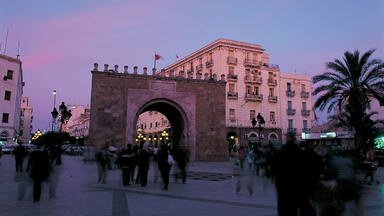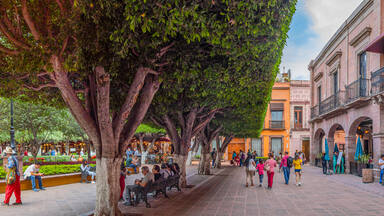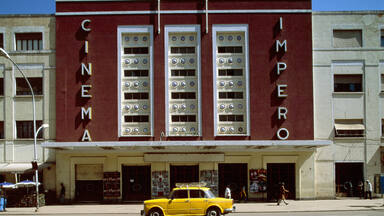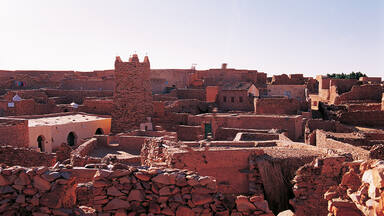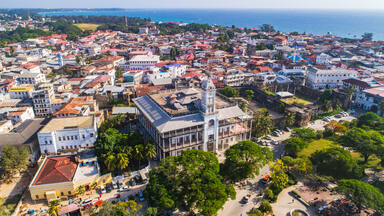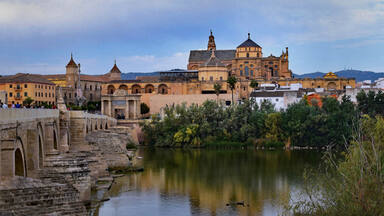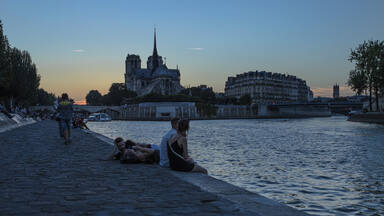"Edinburgh has been the Scottish capital since the 15th century. It has two distinct areas: the Old Town, dominated by a medieval fortress; and the neoclassical New Town, whose development from the 18th century onwards had a far-reaching influence on European urban planning. The harmonious juxtaposition of these two contrasting historic areas, each with many important buildings, is what gives the city its unique character."
Historic building attributes
[Edinburgh] "was also a capital city which was not home to a parliament, but with a fiercely proud municipal authority which, together with a number of influential charitable trusts and public boards, was determined to see the capital adorned with fine architecture. But Edinburgh's self-image as a national capital brought out a particular ambition: its realisation aptly seen (...) in her soubriquet "The Athens of the North"."
Edinburgh includes many outstanding monuments and buildings, with very different styles in the different areas. The Old Town contains many 16th and 17th-century merchants’ and nobles’ houses, such as the early 17th-century restored mansion house of Gladstone’s Land, and important early public buildings, such as the Canongate Tolbooth and St Giles Cathedral. Other significant buildings include the Castle and the Palace of Holyrood. The revival of the Old Town in the 19th century was linked to the birth to the distinctive Scottish Baronial style.
On the other hand, some of the finest public and commercial monuments of the New-classical revival in Europe are located in the city. The New Town includes high-quality ashlar-faced neo-classical buildings, associated with renowned architects, including John and Robert Adam (1728-92), Sir William Chambers (1723-96), and William Playfair (1790-1857).
Attributes of urban elements
"The contrast between the organic medieval Old Town and the planned Georgian New Town of Edinburgh, Scotland, provides a clarity of urban structure unrivalled in Europe. The juxtaposition of these two distinctive townscapes, each of exceptional historic and architectural interest (...) creates the outstanding urban landscape."
The historic centre has two distinct areas: the Old Town, dominated by a medieval fortress, and the neoclassical New Town, whose development from the 18th century onwards had a far-reaching influence on European urban planning. Significant town-planning components include the urban layout, buildings, open spaces and views, which show the difference between the organic growth of the Old Town and the planned New Town.
Old Town
The Old Town, which developed organically since the 12th century, stretches along a high ridge from Castle Rock down to the Palace of Holyrood. Its form reflects the burgage plots of the Canongate, founded as an “abbatial burgh” dependent on the Abbey of Holyrood, and the national tradition of building tall on the narrow “tofts” or plots separated by lanes or “closes” which created some of the world’s tallest buildings of their age.
It is characterised by the survival of the little-altered medieval “fishbone” street pattern of narrow closes, wynds, and courts leading off the spine formed by the High Street. Buildings are typically in masonry or stone, built tall on the narrow “tofts” or plots separated by lanes or “closes”. Public spaces are mainly paved squares and pedestrian streets.
| Typical block morphology | Old Town |
|---|---|
| Plot area | 1.32 ha |
| Lot occupancy | 80% |
| Typical building height | 6 storey |
| Building materials (wall) | Rendered stone masonry |
| Building materials (roof) | Slate |
| Floor-to-area ratio (FAR) | 4.8 |
| Setbacks | 0-3 m |
| Average street width | 6-26 m |
| Internal circulation | Pedestrian lanes (1-2 m wide) |
| Parking | Not available |
New Town
The New Town, constructed between 1767 and 1890, is a collection of seven new towns on the glacial plain to the north of the Old Town. It is framed and articulated by planned ensembles of ashlar-faced, neo-classical buildings, on a consistent scale of three storey, attic and basement, sometimes punctuated by four storey corner and central pavilions. The urban design includes an extensive network of private and public gardens.
| Typical block morphology | New Town |
|---|---|
| Plot area | 1.30 ha |
| Lot occupancy | 58% |
| Typical building height | 4 storey + basement |
| Building materials (wall) | Unrendered ashlar stone |
| Building materials (roof) | Slate |
| Floor-to-area ratio (FAR) | 2.3 |
| Setbacks | 2-4 m |
| Average street width | 6-16 m |
| Internal circulation | Service lanes (6-7 m wide) |
| Parking | Internal court, on-street |
Interactive mapping
Use the interactive mapping tool to explore the different layers that compose Edinburgh's urban heritage. Browse through the tabs to navigate through the different scales of the city and the attributes of its urban heritage identity. Expand the legend on the bottom right corner to discover more. Click on the areas and icons to open pop-ups and learn more about the different areas and buildings.
Attributes of the wider setting of the city or settlement
Edinburgh is located on the coast of the Firth of Forth, on a plain punctuated by massive landforms, including Castle Rock and Arthur’s Seat. The historic centre has two distinct areas: the Old Town, dominated by a medieval fortress, and the neoclassical New Town. The harmonious juxtaposition of these two contrasting historic areas, linked across the Waverley Valley by the North Bridge and the Mound, defines the urban landscape. The dramatic topography of the Old Town, combined with the planned alignments of key buildings in both the Old and the New Town, results in spectacular panoramas and views to and from the city and an iconic skyline.
Intangible heritage values
"The single greatest single contribution to the Enlightenment, the most cataclysmic transofrmation of Edinburgh culture since the Renaissance, was made in Edinburgh, an Olympian status acknowledged in Europe by the French Encyclopaedists themselves. Recent research has also identified the work of Scottish philosophers such as Francis Hutcheson in laying the ground for the very constitutional principles of the new American Republic. For Edinburgh's Celebrated "Hotbed of Genius" included people such as David Hume and Adam Smith, two of the greatest philosophers of the Western world. And yet, this galaxy of talent extends either side of the period, for Edinburgh's Enlightenment could not have come about without there being already in a place a tradition of intellectualism."
References
- ICOMOS. (1995). Advisory Body Evaluation. https://whc.unesco.org/document/154125.
- World Heritage Committee, 19th session. (1995). Decision 19 COM VIII.C.1. https://whc.unesco.org/en/decisions/3101
- World Heritage Committee, 32nd session. (2008). Decision 32 COM 8B.100. https://whc.unesco.org/en/decisions/1546
- World Heritage Committee, 37th Session. (2013). Decision 37 COM 8E. https://whc.unesco.org/en/decisions/4964
- World Heritage Committee, 37th Session. (2013). Document WHC-13/37.COM/8E. https://whc.unesco.org/document/123025
- World Heritage Nomination Dossier 728. (1995). UNESCO Archives.
Links
© UNESCO, 2023.
Project team: Jyoti Hosagrahar, Mirna Ashraf Ali, Alba Zamarbide, Carlota Marijuan Rodriguez, Giacomo Martinis, Marta Zerbini.
* Illustrations marked with an asterisk have all rights reserved. Permission is required for their reuse.
Decisions / Resolutions (3)
The World Heritage Committee,
1. Having examined Documents WHC-13/37.COM/8E and WHC-13/37.COM/8E.Add,
2. Congratulates States Parties for the excellent work accomplished in the elaboration of retrospective Statements of Outstanding Universal Value for World Heritage properties in their territories;
3. Adopts the retrospective Statements of Outstanding Universal Value, as presented in the Annex of Document WHC-13/37.COM/8E, for the following World Heritage properties:
- Andorra: Madriu-Perafita-Claror Valley;
- Argentina: Cueva de las Manos, Río Pinturas; Jesuit Block and Estancias of Córdoba; Quebrada de Humahuaca; Iguazu National Park;
- Australia: Shark Bay, Western Australia; Greater Blue Mountains Area; Royal Exhibition Building and Carlton Gardens; Willandra Lakes Region; Kakadu National Park;
- Austria / Hungary: Fertö / Neusiedlersee Cultural Landscape;
- Bangladesh: The Sundarbans; Ruins of the Buddhist Vihara at Paharpur;
- Belgium : La Grand-Place, Brussels;
- Belgium / France: Belfries of Belgium and France;
- Bolivia: Fuerte de Samaipata; Tiwanaku: Spiritual and Political Centre of the Tiwanaku Culture; Historic City of Sucre; Jesuit Missions of the Chiquitos;
- Brazil: Serra da Capivara National Park;
- Chile: Humberstone and Santa Laura Saltpeter Works; Rapa Nui National Park; Churches of Chiloé; Sewell Mining Town; Historic quarter of the Seaport City of Valparaiso;
- China: Huanglong Scenic and Historic Interest Area; Mount Huangshan; Mountain Resort and its Outlying Temples, Chengde; Ancient City of Ping Yao; Classical Gardens of Suzhou; Summer Palace, an Imperial Garden in Beijing; Ancient Villages in Southern Anhui – Xidi and Hongcun; Longmen Grottoes; Yungang Grottoes; Yin Xu; Imperial Tombs of the Ming and Qing Dynasties; Historic center of Macao; Mausoleum of the First Qin Emperor;
- Colombia: Port, Fortresses and Group of Monuments, Cartagena; Historic Centre of Santa Cruz de Mompox; San Agustín Archaeological Park; National Archeological Park of Tierradentro;
- Costa Rica: Area de Conservación Guanacaste;
- Cuba: Trinidad and the Valley de los Ingenios; Desembarco del Granma National Park; Alejandro de Humboldt National Park; Old Havana;
- Cyprus: Choirokoitia; Painted Churches in the Troodos Region;
- Denmark: Kronborg Castle;
- Ecuador: City of Quito; Historic Centre of Santa Ana de los Ríos de Cuenca; Galápagos Islands;
- El Salvador: Joya de Cerén Archaeological Site;
- Ethiopia: Aksum; Fasil Ghebbi;
- Finland / Sweden: High Coast / Kvarken Archipelago;
- Guatemala: Archeological Park and Ruins of Quirigua; Antigua Guatemala;
- Germany: Classical Weimar; Messel Pit Fossil Site; Roman Monuments, Cathedral of St Peter and Church of Our Lady in Trier; Aachen Cathedral; Cologne Cathedral; Hanseatic City of Lübeck; Historic Centres of Stralsund and Wismar; Museumsinsel (Museum Island), Berlin; Old town of Regensburg with Stadtamhof; Speyer Cathedral; Town Hall and Roland on the Marketplace of Bremen; Town of Bamberg;
- Greece: Mount Athos;
- Honduras: Maya Site of Copan;
- Hungary: Old Village of Hollókő and its Surroundings; Millenary Benedictine Abbey of Pannonhalma and its Natural Environment; Early Christian Necropolis of Pécs (Sopianae); Tokaj Wine Region Historic Cultural Landscape; Hortobágy National Park - the Puszta; Budapest, including the Banks of the Danube, the Buda Castle Quarter and Andrássy Avenue;
- Hungary / Slovakia: Caves of Aggtelek Karst and Slovak Karst;
- India: Sun Temple, Konârak; Group of Monuments at Hampi; Mahabodhi Temple Complex at Bodh Gaya; Elephanta Caves; Great Living Chola Temples; Chhatrapati Shivaji Terminus (formerly Victoria Terminus); Mountain Railways of India;
- Indonesia: Ujung Kulon National Park; Komodo National Park; Lorentz National Park; Tropical Rainforest Heritage of Sumatra; Sangiran Early Man Site;
- Iran (Islamic Republic of): Pasargadae; Takht-e Soleyman;
- Ireland: Archaeological Ensemble of the Bend of the Boyne;
- Italy: Venice and its Lagoon;
- Japan: Yakushima; Shirakami-Sanchi; Buddhist Monuments in the Horyu-ji Area; Shiretoko; Historic Monuments of Ancient Kyoto (Kyoto, Uji and Otsu Cities); Shrines and Temples of Nikko; Sacred Sites and Pilgrimage Routes in the Kii Mountain Range; Itsukushima Shinto Shrine; Himeji-jo;
- Latvia: Historic Centre of Riga;
- Lao People’s Democratic Republic: Town of Luang Prabang;
- Lithuania: Vilnius Historic Centre;
- Luxembourg: City of Luxembourg: its Old Quarters and Fortifications;
- Malaysia: Kinabalu Park;
- Mauritius: Aapravasi Ghat;
- Mexico: Pre-Hispanic City of Teotihuacan; Historic Centre of Morelia; Earliest 16th-Century Monasteries on the Slopes of Popocatepetl; Historic Monuments Zone of Querétaro; Historic Fortified Town of Campeche; Franciscan Missions in the Sierra Gorda of Querétaro; Agave Landscape and the Ancient Industrial Facilities of Tequila; Whale Sanctuary of El Vizcaino; Ancient Maya City of Calakmul, Campeche; Archaeological Monuments Zone of Xochicalco; Historic Monuments Zone of Tlacotalpan; Pre-Hispanic City of Chichen-Itza; Historic Centre of Zacatecas; Historic Centre of Oaxaca and Archaeological Site of Monte Albán; Sian Ka’an; Luis Barragán House and Studio; Rock Paintings of the Sierra de San Francisco; Archaeological Zone of Paquimé, Casas Grandes; Historic Centre of Puebla; Historic Town of Guanajuato and Adjacent Mines; Pre-hispanic town of Uxmal; Hospicio Cabañas, Guadalajara; Islands and Protected Areas of the Gulf of California; Historic Centre of Mexico City and Xochimilco; Pre-Hispanic City and National Park of Palenque; El Tajin, Pre-Hispanic City;
- Netherlands: Ir.D.F. Woudagemaal (D.F. Wouda Steam Pumping Station); Schokland and Surroundings; Droogmakerij de Beemster (Beemster Polder); Rietveld Schröderhuis (Rietveld Schröder House);
- Nicaragua: Ruins of León Viejo;
- Nigeria: Sukur Cultural Landscape;
- Norway: Rock Art of Alta; Urnes Stave Church; Bryggen;
- Oman: Archaeological Sites of Bat, Al-Khutm and Al-Ayn;
- Pakistan: Taxila; Historical Monuments at Makli, Thatta; Rohtas Fort; Buddhist Ruins of Takht-i-Bahi and Neighbouring City Remains at Sahr-i-Bahlol;
- Panama: Darien National Park; Archaeological Site of Panamá Viejo and Historic District of Panamá;
- Paraguay: Jesuit Missions of La Santísima Trinidad de Paraná and Jesús de Tavarangue;
- Peru: City of Cuzco; Chavin (Archaeological Site); Historic Centre of Lima; Historic Sanctuary of Machu Picchu;
- Philippines: Historic town of Vigan;
- South Africa: uKhahlamba / Drakensberg Park;
- Switzerland: Abbey of St Gall; Benedictine Convent of St John at Müstair; Old City of Berne; Three Castles, Defensive Wall and Ramparts of the Market-Town of Bellinzona;
- Thailand: Dong Phayayen-Khao Yai Forest Complex; Thungyai-Huai Kha Khaeng Wildlife Sanctuaries; Historic Town of Sukhothai and Associated Historic Towns; Ban Chiang Archaeological Site;
- Turkey: Göreme National Park and the Rock Sites of Cappadocia; Nemrut Dağ; Great Mosque and Hospital of Divriği; Hierapolis-Pamukkale;
- United Kingdom of Great Britain and Northern Ireland: Blaenavon Industrial Landscape; Blenheim Palace; Canterbury Cathedral, St Augustine's Abbey, and St Martin's Church; Castles and Town Walls of King Edward in Gwynedd; City of Bath; Durham Castle and Cathedral; Giant's Causeway and Causeway Coast; Heart of Neolithic Orkney; Ironbridge Gorge; Maritime Greenwich; New Lanark; Old and New Towns of Edinburgh; Stonehenge, Avebury and Associated Sites; Studley Royal Park including the Ruins of Fountains Abbey; Tower of London; St Kilda; Westminster Palace, Westminster Abbey and Saint Margaret's Church;
- Uruguay: Historic Quarter of the City of Colonia del Sacramento;
- Uzbekistan: Itchan Kala;
- Venezuela : Coro and its Port; Ciudad Universitaria de Caracas;
4. Decides that retrospective Statements of Outstanding Universal Value for World Heritage properties in Danger will be reviewed by the Advisory Bodies in priority;
5. Further decides that, considering the high number of retrospective Statements of Outstanding Universal Value to be examined, the order in which they will be reviewed by the Advisory Bodies will follow the Second Cycle of Periodic Reporting, namely:
- World Heritage properties in the Arab States;
- World Heritage properties in Africa;
- World Heritage properties in Asia and the Pacific;
- World Heritage properties in Latin America and the Caribbean;
- World Heritage properties in Europe and North America;
6. Requests the World Heritage Centre to harmonise all sub-headings in the adopted Statements of Outstanding Universal Value where appropriate and when resources and staff time allow to carry out this work;
7. Also requests the State Parties, Advisory Bodies and World Heritage Centre to ensure the use of gender-neutral language in the Statements proposed for adoption to the World Heritage Committee;
8. Further requests the World Heritage Centre to keep the adopted Statements in line with subsequent decisions by the World Heritage Committee concerning name changes of World Heritage properties, and to reflect them throughout the text of the Statements, in consultation with States Parties and Advisory Bodies;
9. Finally requests the States Parties to provide support to the World Heritage Centre for translation of the adopted Statements of Outstanding Universal Value into English or French respectively, and finally requests the Centre to upload these onto its web-pages.
Read more about the decisionThe World Heritage Committee,
1. Having examined Documents WHC-08/32.COM/8B.Add and WHC-08/32.COM/INF.8B1.Add,
2. Adopts the following Statement of Significance for the Old and New Towns of Edinburgh, United Kingdom:
The remarkable juxtaposition of two clearly articulated urban planning phenomena. The contrast between the organic medieval Old Town and the planned Georgian New Town provides a clarity of urban structure unrivalled in Europe. The juxtaposition of these two distinctive townscapes, each of exceptional historic and architectural interest, which are linked across the landscape divide, the "great area" of Sir Walter Scott's Waverley Valley, by the urban viaduct, North Bridge, and by the Mound, creates the outstanding urban landscape.
The Old Town stretches along a high ridge from the Castle on its dramatically situated rock down to the Palace of Holyrood. Its form reflects the burgage plots of the Canongate, founded as an "abbatial burgh" dependent on the Abbey of Holyrood, and the national tradition of building tall on the narrow "tofts" or plots separated by lanes or "closes" which created some of the world's tallest buildings of their age, the dramatic, robust, and distinctive tenement buildings. It contains many 16th and 17th century merchants' and nobles' houses such as the early 17th century restored mansion house of Gladstone's Land which rises to six storeys, and important early public buildings such as the Canongate Tolbooth and St Giles Cathedral.
The Old Town is characterized by the survival of the little-altered medieval "fishbone" street pattern of narrow closes, wynds, and courts leading off the spine formed by the High Street, the broadest, longest street in the Old Town, with a sense of enclosed space derived from its width, the height of the buildings lining it, and the small scale of any breaks between them.
The New Town, constructed between 1767 and 1890 as a collection of seven new towns on the glacial plain to the north of the Old Town, is framed and articulated by an uncommonly high concentration of planned ensembles of ashlar-faced, world-class, neo-classical buildings, associated with renowned architects, including John and Robert Adam, Sir William Chambers, and William Playfair. Contained and integrated with the townscape are gardens, designed to take full advantage of the topography, while forming an extensive system of private and public open spaces. The New Town is integrated with large green spaces. It covers a very large area, is consistent to an unrivalled degree, and survives virtually intact.
Some of the finest public and commercial monuments of the New-classical revival in Europe survive in the city, reflecting its continuing status as the capital of Scotland since 1437, and a major centre of thought and learning in the 18th century Age of Enlightenment, with its close cultural and political links with mainland Europe.
The successive planned extensions from the first New Town, and the high quality of the architecture, set standards for Scotland and beyond, and exerted a major influence on the development of urban architecture and town planning throughout Europe.
The dramatic topography of the Old Town combined with the planned alignments of key buildings in both the Old and the New Town, results in spectacular views and panoramas and an iconic skyline.
The renewal and revival of the Old Town in the late 19th century, and the adaptation of the distinctive Baronial style of building for use in an urban environment, influenced the development of conservation policies for urban environments.
Edinburgh retains most of its significant buildings and spaces in better condition than most other historic cities of comparable value.
Criterion (ii): The successive planned expansions of the New Town, and the high quality of its architecture, set standards for Scotland and beyond, and exerted a major influence on the development of urban architecture and town planning throughout Europe in the 18th and 19th centuries.
Criterion (iv): The Old and New Towns together form a dramatic reflection of significant changes in European urban planning, from the inward-looking, defensive, wall medieval city of royal palaces, abbeys, and organically developed small burgage plots in the Old Town, through the expansive format Enlightenment planning of the 18th and 19th centuries in the New Town, to the 19th century rediscovery and revival of the Old Town with its adaptation of a distinctive Baronial style of architecture in an urban setting.
3. Recommends that assessment for statements of authenticity and integrity / statements of protection and management should be postponed to the 33rd session of the World Heritage Committee (2009) awaiting adoption of a methodology and an agreed format for Statements of Outstanding Universal Value for inscribed properties.
Read more about the decisionLunenburg Old Town
741
Canada
C (iv) (v)
The Committee concluded that Lunenburg Old Town is an outstanding example of the planned European colonial settlement in North America, 1n terms both of it~ conception and its remarkable level of conservation.
The Committee decided to inscribe Lunenburg Old Town on the World Heritage List on the basis of criteria (iv) and (v).
Read more about the decision
